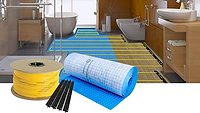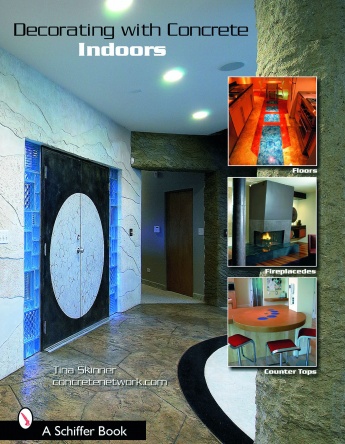Latest Radiant Heating Products Offer More Flexibility, Performance

Tile installation over a radiant mat system. Photo courtesy of Jon Namba.
For many years, one of the biggest drawbacks to ceramic tile for consumers in colder climates was the discomfort of walking on it during fall and winter months. Radiant floor warming systems finally solved the problem so consumers could finally heat their floors to a comfortable temperature, with the added benefit of reduced energy costs.
The early generation radiant systems were challenging to specify and install correctly, causing some consumers to avoid them. Thankfully, these issues have been rectified by technological advancements and the latest systems are much easier to specify/install, and be used over other types of flooring, including wood, laminate and resilient.

Pre-wired systems have simplified installation of radiant heating systems considerably. Photo courtesy of Laticrete.
“When floor warming and heating systems were first introduced in home some decades ago, problems stemmed from electromagnetic fields (EMF),” said Isabelle Marcil, Flextherm Inc. communications coordinator. New systems offer products (paired heating elements) that are sound and health conscious.
In addition to these problems, installers also had to contend with different fastening systems and cables, which had to be modified for each installation. With staple-up systems, installers had to use extra caution to avoid puncturing the tubes during stapling. These problems have also been rectified through the introduction of simpler installation systems.

MP Global Products’ QuietWarmth radiant heat underlayment can be used with floating laminate, engineered hardwood, floating tile, glue-down hardwood and traditional tile installs. Photo courtesy of MP Global Products.
“Radiant heating manufacturers are always going to be looking at ways to make the installation as easy as possible because I think ease of installation is one of the biggest selling points with radiant heating systems,” said Jay DeLuca, Laticrete product manager-adhesives. “We have gotten to the point as an industry where the majority of manufacturers have a modern looking thermostat with all the bells and whistles that customers had been demanding for years. So I think that leaves practicality of installation as the biggest challenge left in the industry. We have seen a lot of innovation in both the design of radiant heating layouts and in the installation tool category.”
“After a thorough improvement in cable systems over the past 10 years, one of the re-emerging technologies is the carbon panel,” said Sandrine Regina, Warmup Inc. North American marketing manager. Carbon panels, previously used for ceiling heat, have now been adapted for use under carpet, laminate and vinyl floors, Regina added.
Insulation was the next major improvement directly affecting the efficiency of electric floor heating systems. An insulating version of the classic cement backer board was introduced to provide the lowest operating cost even in the coldest conditions.”
“Advancements have come in two forms,” said Kolyn Marshall, Watts Radiant director of strategic marketing. “The first advancement is simple physical improvements. Materials used to make product have become more durable, tougher, and easier to work with.

This diagram illustrates the energy savings that homeowners can achieve by installing radiant heating systems. Diagram courtesy of Flextherm.
DeLuca added: “The biggest effect on the performance of our radiant heating product offering hasn’t come from any new feature or product development, but from a recent commitment to improve our employee knowledge and service capabilities.
“We have made this commitment through a program that is aimed at improving our design capabilities, re-training our sales and customer service staff, and meeting the overall needs of the radiant heating customer. Unlike some building materials, radiant heating won’t just sell and install itself and we realize that the best feature we can offer to our customers is unmatched product support.”
Another important area of innovation has been the development of smart controls that allow the user greater flexibility in using the systems, as well optimizing energy use, which can save the consumer considerably in their heating bills.
Despite current economic conditions, demand for radiant heating systems has been increasing by an average of 46.9 percent per year since 1998, according to the Radiant Panel Association. With this in mind, radiant heating manufacturers continue to introduce new technological advancements that make radiant heating systems easier to install and use.
“The popularity of electric floor warming systems may very well be explained by the strong renovation market, for which radiant heating systems are ideal, as opposed to the decline in the number of new constructions,” said Marcil.
Looking for a reprint of this article?
From high-res PDFs to custom plaques, order your copy today!








